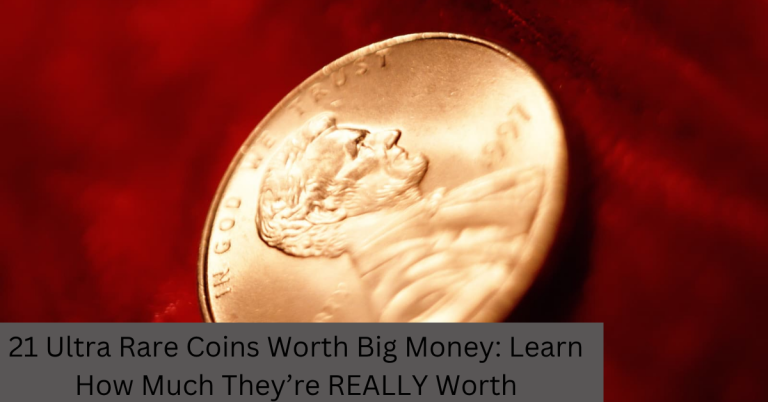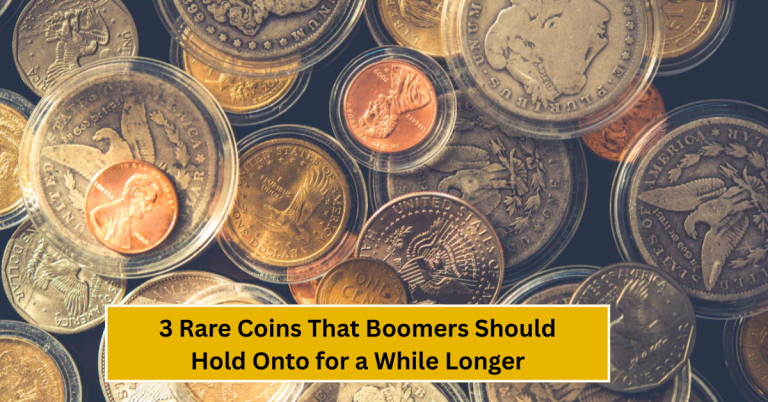
Collecting rare coins is an exciting hobby that combines history, art, and the thrill of finding something unique. For many young collectors and enthusiasts, discovering a coin that is both rare and valuable can be like striking gold. Among the many fascinating coins out there, the UK’s £1 coin with a famous error has gained attention for fetching hundreds of pounds, making it a must-know for anyone interested in valuable coins.
In this article, we will explore what makes this iconic error £1 coin so special, how it gained its mega value, and why rare coins like these are becoming popular even in India. Whether you are a beginner or just curious, this guide will help you understand the exciting world of rare coins and how to spot potential treasures in your collection.
What Makes a Coin Rare and Valuable?
Coins become rare and valuable due to several factors, including limited production, historical significance, and mistakes made during the minting process. When a coin is produced with an error, collectors often rush to buy them because these flawed coins are very uncommon. This rarity increases demand, which can drive the price up significantly.
In general, good condition and clear markings also make coins more valuable. For younger collectors, learning about these factors helps to recognize when a coin might be worth more than just its face value. Rare coins are not only investments but pieces of history that carry stories from the past.
The Iconic Error £1 Coin Explained
The £1 coin, introduced in the UK in 1983, has become a popular item among collectors. One of the most well-known mistakes involves coins minted with an inverted design or missing details. An error £1 coin from certain years can sell for hundreds of pounds because of its uniqueness.
For example, some error £1 coins have the Queen’s portrait or the coin’s reverse design misaligned or flipped. These coins were never meant to look that way, which made them rare collectibles as only a small number were accidentally produced before being caught by the mint.
How to Spot an Error £1 Coin
Spotting an error on a £1 coin requires a careful eye. Look for anything unusual like upside-down designs, missing parts, doubled images, or strange edges. Collectors often use magnifying glasses to get a closer look at the details. If something looks off compared to a normal £1 coin, it could be an error coin.
Make sure to compare the coin with trusted images online or in coin collecting books. Remember, not every odd-looking coin is valuable, so it is important to verify the error properly. Joining online forums and coin groups can also help you learn from more experienced collectors.
Why Are Rare Coins Popular Among Young Collectors?
Younger generations are showing more interest in coin collecting because it is an easy hobby to start and can be very rewarding. Thanks to the internet, learning about rare coins and trading them has become simpler than ever. Finding an error coin, especially one with high value, adds excitement and a sense of achievement.
Moreover, rare coins are a form of investment that doesn’t need complex knowledge about stocks or real estate. They hold cultural and historical significance, connecting young people with the past. This makes coin collecting both educational and potentially profitable.
Rare Coins in India: Growing Interest and Opportunities
Though the iconic error £1 coin is British, India has a rich history of coins that collectors value highly. Many Indian rare coins from ancient and medieval periods are prized for their craftsmanship and stories. The growing interest in numismatics (coin collecting) in India shows that young people are eager to explore this fascinating world.
With global marketplaces online, Indian collectors can easily buy, sell, or trade rare coins from around the world, including those error £1 coins. This opens new doors for hobbyists to expand their collections and learn more about different cultures.
Tips for Starting Your Rare Coin Collection
If you want to start collecting rare coins, begin by exploring what coins you already have at home. Look for any that look different or old. Research these coins online or visit local coin shops to learn more about their history and value.
Keep your coins safe in protective holders or albums. Avoid cleaning your coins roughly, as this can reduce their value. Join coin clubs or online groups to connect with other collectors and get advice from experts.
Conclusion: The Thrill of Finding an Iconic Error £1 Coin
Rare coins, especially error coins like the iconic £1 piece, show how small mistakes can create huge values. For young collectors, these coins offer a fun and educational way to dive into history and potentially make money. Whether you live in India or anywhere else, keep an eye out for error coins as they might be hiding in your pocket or drawer.
By learning about what makes coins rare and valuable, you can start your collection with confidence. Remember, every rare coin has a story, and maybe one day your error £1 coin could be worth hundreds too!




